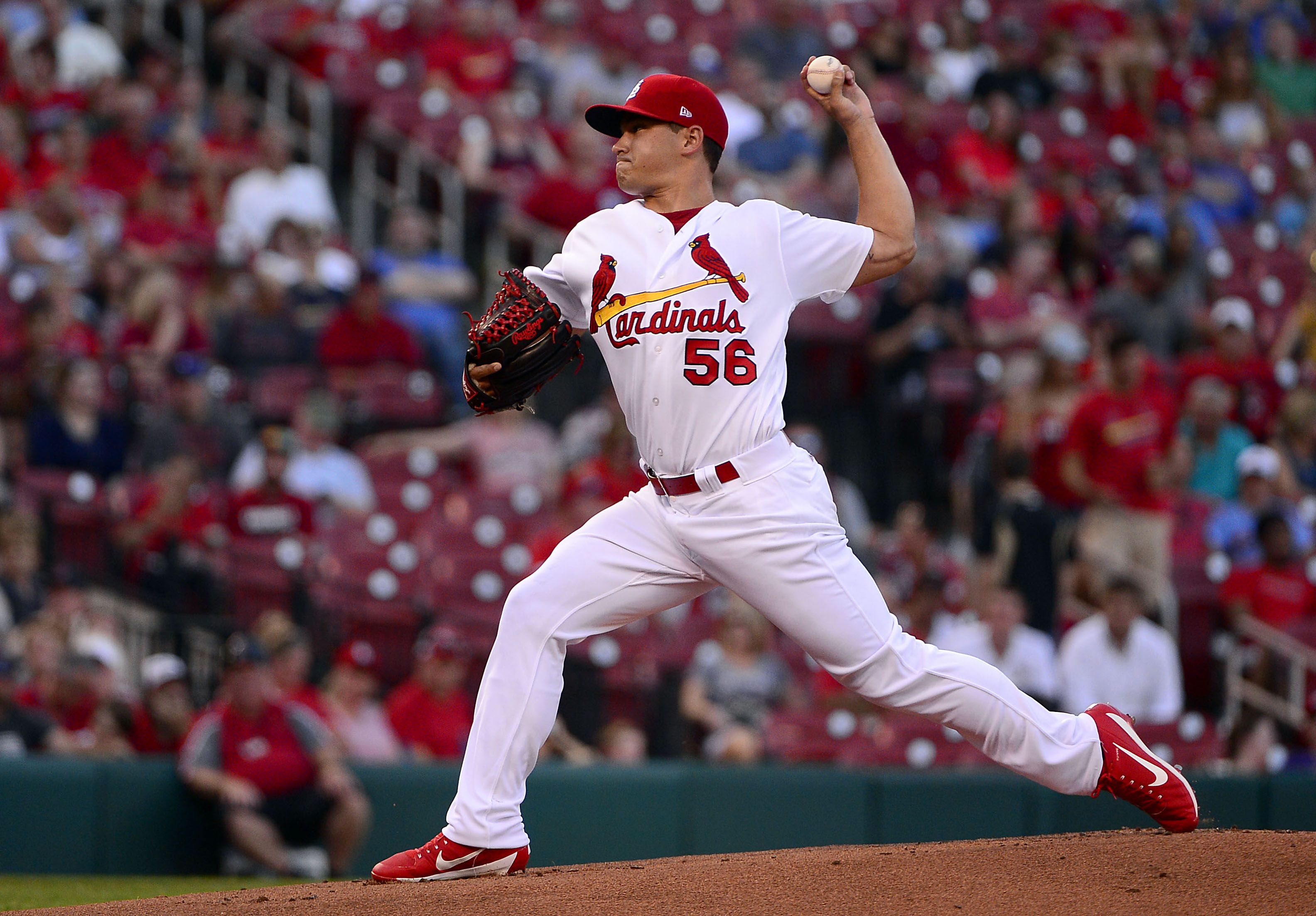BIRMINGHAM, Ala. -- It was Tom Hanks’ character, Jimmy Dugan, who famously declared in the movie A League of Their Own, “There’s no crying in baseball.”
Here, in the biomechanics lab at American Sports Medicine Institute (ASMI), research director Glenn Fleisig might as well declare, “There’s no guessing in baseball.”
OK, hitters guess what pitchers are going to throw, but scientists who study the game do not guess.
As the College World Series gets set to start Saturday and the minor leagues churn toward midseason, ASMI, which was founded in 1987 by renowned orthopedic surgeon James Andrews, is examining college and minor league pitchers in two major studies related to pitching injuries and performance. The purpose, plain and simple, is to use science to eliminate guesswork concerning the health of pitchers.
Major League Baseball is funding an ASMI study on lowering the mound from 10 to 6 inches. A spokesman for MLB says the study is being done in the interest of arm safety. (Minor league and college pitchers also pitch from a mound that is 10 inches high.)
What if a lower mound means less velocity but healthier pitchers? Fleisig says ASMI will measure velocity in the study.
A move to lower the mound height could have a dramatic impact on the game. After all, when the mound was lowered 5 inches in 1969 (15 inches to 10 inches) after a season of dominance by pitchers in 1968, hitters regained some luster. A reduced strike zone in 1969 surely had impact, but mound height was significant. National League ERA went from 2.99 in 1968 to 3.59 in 1969. AL ERA went from 2.98 to 3.62.
Pitchers have become goliaths. They are mid-90s mph throwers — and not just as starters but hurlers coming out of the bullpen. If velocity comes down with a 6-inch mound, baseball’s caretakers might have a solution to the abundance of strikeouts in the game and get more balls put in play. And while MLB commissioned the study to look at safety, it surely will also get data related to performance.
According to Baseball-reference.com, AL games average 8.20 strikeouts a team per game. In 2005, the average strikeouts in the AL was 6.07. (The NL difference over that period: 8.27 vs. 6.51.)
But will pitchers overexert themselves to keep their fastballs at 95 when a lower height drops their fastball to 92?
Don’t hazard a guess, Fleisig says. Remember, everyone assumed curveballs in young pitchers led to arm injuries, but an ASMI study in 2006 of college pitchers found throwing curveballs was less stressful than throwing fastballs.
“My first reaction is I hate change,” says Cincinnati Reds prospect Tyler Mahle, 22, one of the top pitchers in the Class AA Southern League. “There are so many things you can do to keep your arm safe. I pride myself on arm care and shoulder work. There are things you can do to protect arms besides changing the way baseball is played.”
Yet baseball has been overrun with injuries to pitchers over the last 10 years on the youth, college and professional levels. ASMI also is studying mound heights for youth pitchers, primarily to determine if lowering them makes throwing more or less stressful on their arms.
ASMI will present preliminary findings to MLB in a research meeting in July in Toronto. The full findings of the first study, which has used college pitchers, will be presented at the end of 2017.
Depending on the results, MLB might have to ask itself how much it wants to change the game to prevent injuries.
“It would be a little different to get adjusted with 4 inches off the mound,” says Philadelphia Phillies farmhand Tom Eshelman, 22, the Class AAA International League player of the month for May. “I think you would have to get adjusted and change your release point to get the ball down.”
The second study, conducted with minor league players in the offseason and sometimes during the season, should aid the conclusions ASMI experts make about the first study. Its purpose is to examine the various factors that might contribute to pitchers’ injuries and how the injuries correlate with each other, if they correlate.
ASMI wants to know if injuries are a result of velocity, innings pitched, previous injuries, mechanics, players’ unique physiologies or a combination of factors.
ASMI started collecting baseline data in 2015 on pitchers when they were drafted. There were MRIs done to see what injuries pitchers might already have inside their elbows (such as frays or partial tears).
The pitchers were also put through biomechanics tests of their pitch deliveries and physicals to determine their range of motion in the shoulder and elbow.
Most major league organizations allow this data to be collected on minor leaguers when they report to spring training or their first fall instructional league. The idea is to track these pitchers over time and help determine causes of injuries.
Fleisig says data have been collected on 250 pitchers during their first spring trainings or first instructional leagues. The number will probably grow to 300 by the fall, when the study is due to be completed.
“Why everyone has had a problem getting an answer as to the cause of these injuries is because people are looking to say, ‘This many innings leads to injury, or these mechanics lead to injury,’” Fleisig says.
“The unique thing about this study is that it is not looking at one factor. You have to put all the factors together. There could be a guy with a lot of innings but good mechanics, or a guy with few innings and bad mechanics. It’s not the best approach to look at one factor. Can you say the guy with the higher velocity gets hurt more? That’s one factor. Let’s put all factors together and see what the equation is. I’m very excited about that.”
Veteran pitching coach Rick Peterson, who first became aware of the science of pitching at ASMI in 1989 when he coached in the minors, says minor league pitchers should be ecstatic over this scientific approach to baseball.
“Get a biomechanical assessment of your delivery, which is an MRI of your delivery,” says Peterson, who served as the major league pitching coach with the Oakland Athletics, New York Mets and Milwaukee Brewers.
“That way you can assess what the yellow flags are and what the potential red flags are. Then design a conditioning program that is specific to you and based on the range of motion in your hips and range of motion in your arm.”
But what about the invariable pushback from a minor league hurler who received a $1 million bonus?
He might say, “This windup got me here. I’m sticking with it?”
“Do you think you are going to do the same thing for the rest of your career and be good in the big leagues?” says Peterson, who has also served as the Baltimore Orioles’ director of pitching development for five seasons through 2016. “That’s not happening. You look at major league pitchers in their fifth, sixth, seventh year, and do you really think they are doing the same thing as when they broke in? They are not.”
Still, Colton Turner, a 26-year-old pitcher at Class AA Birmingham (Ala.), a Chicago White Sox affiliate, says altering mechanics based on science presents a conundrum for pitchers who arrive in pro baseball as success stories.
“You can’t clone everybody. How they pitch is how the pitch,” Turner says. “But at the same time, if the science finds something that could lead to injury and you can help them out, the pitcher has to know it.”
Fleisig and ASMI are also using a device to monitor stress on pitchers’ elbows, specifically the torque. The Motus Sleeve is a compression sleeve made of polyester/elastane fabric that slides on a pitcher’s arm.
A round sensor (Bluetooth enabled) is housed inside the sleeve to record metrics on an elbow’s workload.
“If it was available to me, I would use the Motus Sleeve. Any information is good information,” Turner says. “If I was in an unsafe range with torque, I would be more cautious, especially if I was experiencing discomfort.
“Science for guys trying to get to the big leagues can help, no doubt.”
The waiting list for surgery at Andrews’ clinic here can be crowded with pitchers, especially youngsters with big dreams.
If the mound study, biomechanics on draft picks and wearable technology can help reduce his number of patients, chances are Andrews’ staff would be all-in.
But depending on the results, the risk/reward question of how much Major League Baseball — and the players who feed into it — is willing to adjust to avoid injuries should linger.
“The best kids to change are high school kids or Little League kids, because that’s where you get the bad habits,” says Bob Stanley, a former All-Star pitcher now serving as pitching coach at Class AAA Buffalo, a Toronto Blue Jays affiliate.
“The 21-, 22-year olds, sure, you still have a chance. I try and work on mechanics the first day I get them. The very first thing is to get them a solid windup.”


